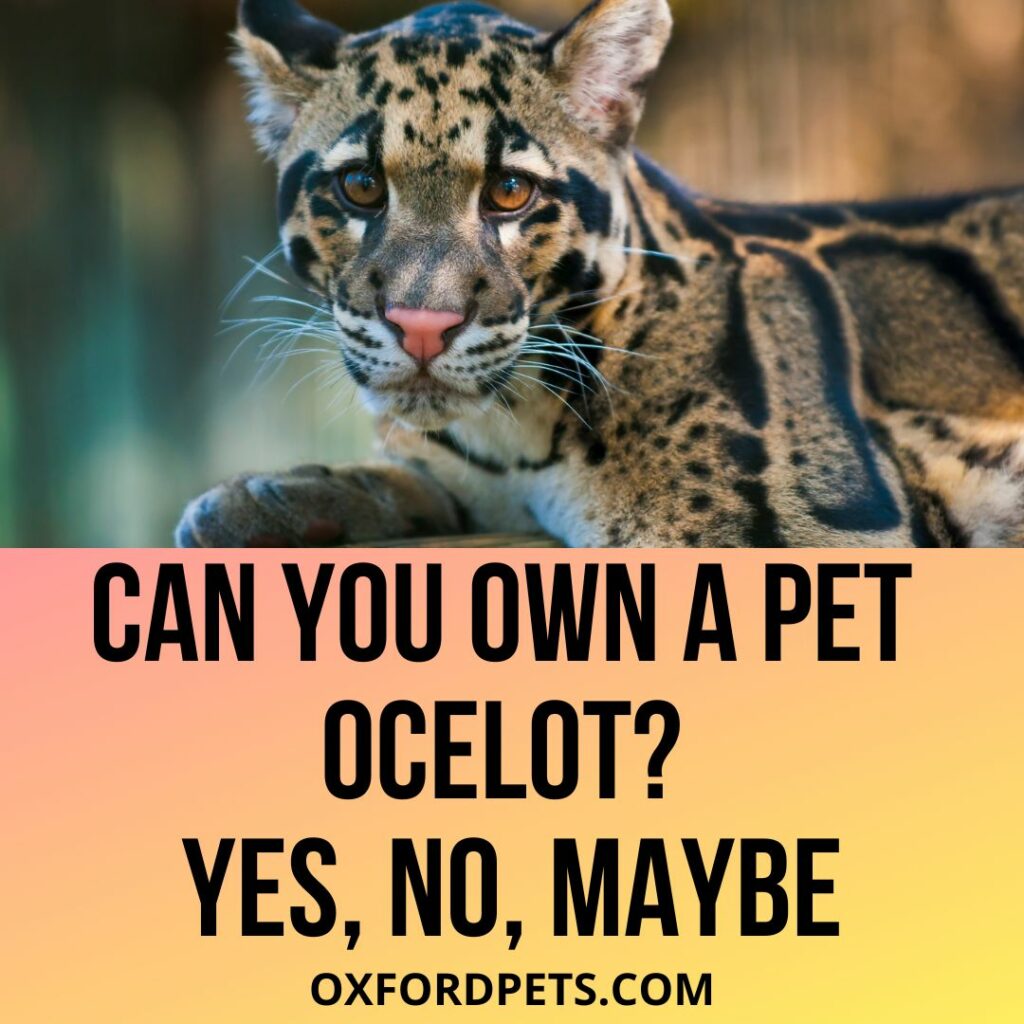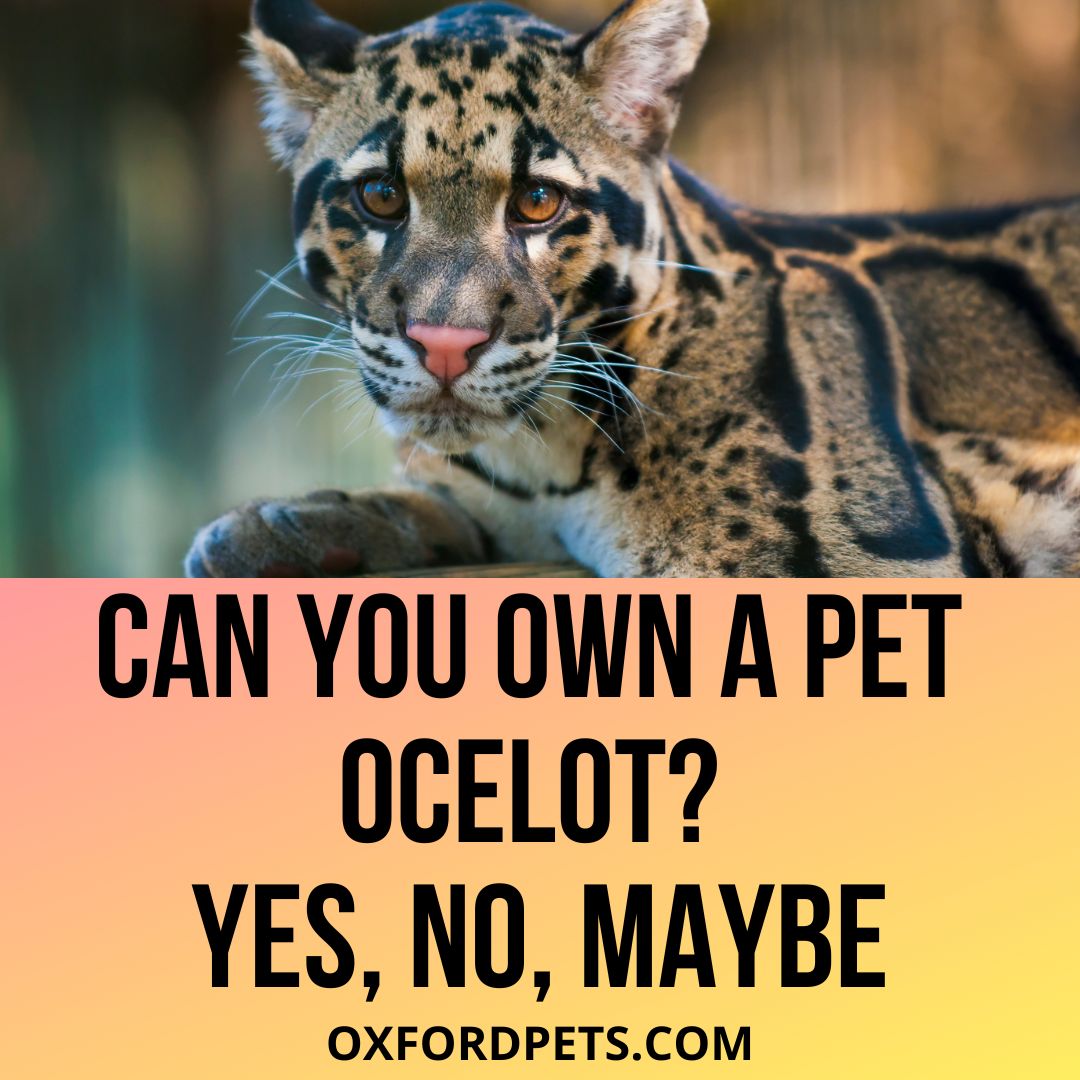Exotic cats like Ocelots have a particular pull that makes more people crave to have them as pets. Given their exact tiger-like appearance is obvious why individuals are going crazy to domesticate Ocelots. But does Ocelot really makes good pets? Come, let’s find out about the same.
Contents
- Getting a Pet Ocelot: Things You Need to Know
- Where Do Ocelots Originate?
- Ocelots Species Taxonomy Chart
- Does Ocelot make good pets?
- Is it legal to keep Ocelot as a pet?
- Are Ocelots legal in the U.S.?
- Can you have Ocelots as pets?
- Ocelots as pets- You have to meet their needs
- How much does an Ocelot Cost?
- Frequently Asked Questions
- Wrapping up…
Getting a Pet Ocelot: Things You Need to Know
What Exactly is an Ocelot? An Ocelot is a spotted wild cat of the new world. This medium-sized tiger-like creature has two subspecies. Both are native to the Southern United States, Caribbean Islands of Margarita and Trinidad, and Mexico, Central, and South America.
Ocelots are larger than housing cats but quite small than leopards and tigers. While their weight ranges between 17.6 and 34.2 lb, they reach no more than 15.7 to 19.7 inches at the shoulders.
Ocelots become active during twilight and night hours and are territorial. Though Ocelots love being in the wild, they are often spotted in captivity all across America.
However, their domestication doesn’t deny the fact that the Ocelots population is decreasing by a high number in many places.
Where Do Ocelots Originate?
Ocelots were first described in 1758 by Carl Linnaeus, a Swedish botanist, physician, zoologist, and taxonomist. Their ancestors are estimated to originate during 8.0 MYA initially in the North American region.
At the same time, some researchers claim their ancestors to be of Asian origin. Their occurrence has also been highly associated with large patches of undisturbed forest.
The major modern felid lineages of Ocelots were established between 10.8 and 6.2 million years ago (Mya). They have roughly been in the same neotropical region where They originated millions of years ago.

Ocelots Species Taxonomy Chart
| Name | Ocelot |
| Other Names | Tigrillo, Ocelote, Gato onza, Ghost Cat, Spotted Wild cat of the New world |
| Scientific Names | Leopardus pardalis |
| Kingdom | Animalia |
| Phylum | Chordata |
| Class | Mammalia |
| Order and Suborder | Carnivora and Feliformia |
| Family and Subfamily | Felidae and Felinae |
| Genus | Leopardus |
| Species | L. pardalis |
| Size | Length: 68 to 100 cmMass: 8 to 16 kg |
| Lifespan | From 8 to 11 years in the wild Whereas up to 20 years in captivity |
Does Ocelot make good pets?
Ocelots are fascinating, and domesticating them simply looks cool to many. However, despite how common Ocelots are in domestication, they still do not make good pets.
Ocelots are wild cats, probably a miniature version of leopards, tigers, and jaguars. Keeping them at home or in captivity as pets comes with a lot of hazards. Here are a few reasons that state why Ocelots do not make good pets:
- Ocelots always love hunting, which is a threat to any other pet in their neighborhood.
- Ocelots have a strong odor, and their scent marking is always an issue.
- Housing Ocelots means you need to dedicate a lot of space to them.
- Ocelots are extremely destructive and not easier than keeping any house cat.
- Finding an exotic Veterinarian for Ocelots is kind of tricky in many regions.
- Buying and keeping an Ocelot is extremely expensive, and not everyone can afford them in the long run.
Is it legal to keep Ocelot as a pet?
Though Ocelots aren’t endangered, wildlife associations still work toward protecting them. Having them as pets depends solely upon which area you live in and what’s your government’s take on exotic cats.
For example, countries under the Asian subcontinent don’t legalize keeping Ocelots as pets. However, while you are a resident of the U.K., you can keep pet Ocelots after attaining a special license. Even in different parts of America, a special permit/ license is a must for keeping Ocelots as pets.
Are Ocelots legal in the U.S.?
Ocelots are native to the United States, and thus there are several laws for protecting these species. However, possessing Ocelots as pets is legal in most of the U.S. States.
The International Union for Conservation of Nature (IUCN) lists Ocelots as of least concern, giving individuals the freedom to buy and sell Ocelots. However, hunting of Ocelots is still discouraged in the U.S. and is also a legal offense.
Regarding the possession of ocelots in the United States, every State/ County/ City has its own laws. For example, keeping Ocelots as pets is strictly banned in Alaska and Hawaii. Whereas New York, California, and Georgia residents can have these spotted cats as pets.
To keep Ocelots as pets in the U.S., one has to go through a legal procedure. While some states only demand some money, others ask for your experience and knowledge of owning an exotic pet before.
Some authorities may even pay a visit to your home, ensuring you have enough space and resources in order to pet Ocelots.
Can you have Ocelots as pets?
If you are willing to invest money, time, and extra-human efforts, you can surely have Ocelots as pets. However, remember that these wild cats are extremely needy and demanding. Having them means showering extra personal attention to each of the pets.
Also, during the beginning, Ocelots will make extra loud noises and scream their lungs out. This might create a problem if you live in a residential area or your neighbors have pets.
Ocelots as pets- You have to meet their needs
Housing Needs Of Ocelots
Usually, Ocelots can survive in a cage or indoors, but it is always better for them to provide an outdoor territory.
For everyone, Ocelot provides at least half acres of outdoor space so that they can have enough of their physical activities. It will prevent the feline from getting obese and catching problems that they might not in the wild.
Also, while housing an Ocelot, make sure you cover their entire territory with fences, even from the above (ceiling space). This is essential since Ocelots know climbing, jumping, and running, and it is easier for them to escape.
In addition to that, consider incorporating trees with branches and plants that are safe to chew, along with poles and ropes for climbing. Do add a small pond or a minor aquatic feature for the pet to enjoy.
Ocelot Temperature and Humidity Needs
Ocelots in the wild survive in tropical and subtropical rainforests to semi-arid, dense thorn scrub. Though in captivity, they can easily adapt to the human habitat and adjust to different temperatures and humidity.
However, still, when the outdoor is snowy, it is important to provide a climatically controlled environment for your pet Ocelot.
Ocelot Dietary Needs
Ocelots are highly nocturnal, and their diet is majorly carnivorous. In the wild, they prefer hunting, killing, and consuming small animals that are easily available around them.
Their diet includes frogs, rodents, rabbits, iguanas, birds and fish, and other small animals that are easy to catch.
Therefore, even in captivity, they need meat all across their lifetime. However, providing an already dead animal cut well into pieces won’t do justice to their dietary needs.
Ocelots are wild animals; thus, they need to hunt once in a while. Feeding them by mouth will impact their wild habits and health.
Ocelot Cleaning
Like any wild cats, Ocelots can lick and clean themselves. For litter, it is easier to train them than many other exotic pets. However, training like this is better done when the Ocelot is still young.
Ensure you clean your pet Ocelot’s enclosure from litter and do not allow them to consume it. If done, they may develop various intestinal issues.
Common health problems with Ocelot
Ocelots who spend most of their time in domestic care are likely to suffer from health problems like,
Feline herpes virus (FHV), Feline panleukopenia virus (FPV), Feline leukemia virus (FeLV), Feline calicivirus (FCV), Feline coronavirus (FCoV), and more.
How much does an Ocelot Cost?
Depending upon age, size, and health, an average Ocelot, will cost anywhere between $1,500 to $15,000.
Where to buy an Ocelot?
Where to find an Ocelot breeder? Your local exotic pet shop can help you buy an Ocelot. While a few of them would already have the feline in stock, others may be able to arrange one on demand.
Or there are a few certified Ocelot breeders in the United States. Contact your nearby Animal and Plant Health Inspection Service to know about them.
(part of the Department of Agriculture). These individuals may help you with the entire process of permitting and purchase of Ocelots.
Frequently Asked Questions
Is it Safe to keep Ocelots as pets?
Having Ocelots as pets is safe until you keep them inside a closed enclosure. Keeping them in the open like dogs and cats is like calling dangers of Ocelot attack.
Are Ocelots Friendly Towards humans?
Yes, Ocelots that humans raise from a very young age can become extremely affectionate to their owners. They will even convince the owner to play along like a regular dog and cat.
Can Ocelot hurt you?
Ocelots likely won’t hurt you, though they can likely bite if felt threatened.
Do Ocelots Meow?
Yes, Ocelots being wild cats, would surely meow. However, both males and females from the tribe have a very strange and powerful meow.
Wrapping up…
Can You Own A Pet Ocelot? Well, if you have enough time, resources, and space, and your government allows it, you can definitely own a pet Ocelot. However, your ownership is quite subjective if you are a first-time pet keeper with no experience with animals.
Before bringing an Ocelot home, just be certain that it is a wild cat at the end of the day. Once you have it as a pet, you are in for a long and highly responsible haul.
